Antiquity to Byzantium
Athens | Palaia Epidaurus | Napflion | Gythion | Pylos | Katakolon | Itea | Athens
A brilliant introduction into the Golden Age of Greek civilisation hosted by expert classical historian Eugenia Alexiadou. It’s a cruise, a holiday and an education all wrapped up into one.
Calling at: Athens – Palia Epidaurus – Nafplion – Gythion – Pylos – Katakolon – Itea - Athens
Your vessel: The Motor Sailor Galileo – a beautiful blue three-master that sails under canvas whenever conditions allow. With only 26 cabins she’s small enough to get you up close and personal with even the smallest waterfront tavernas. With no more than 52 guests, who all sit down to eat together, it’s a great way to make new friends. There is no swimming pool – when it’s time to cool off the Captain heaves-to in a secluded bay and we swim in the Aegean.
Highlights:
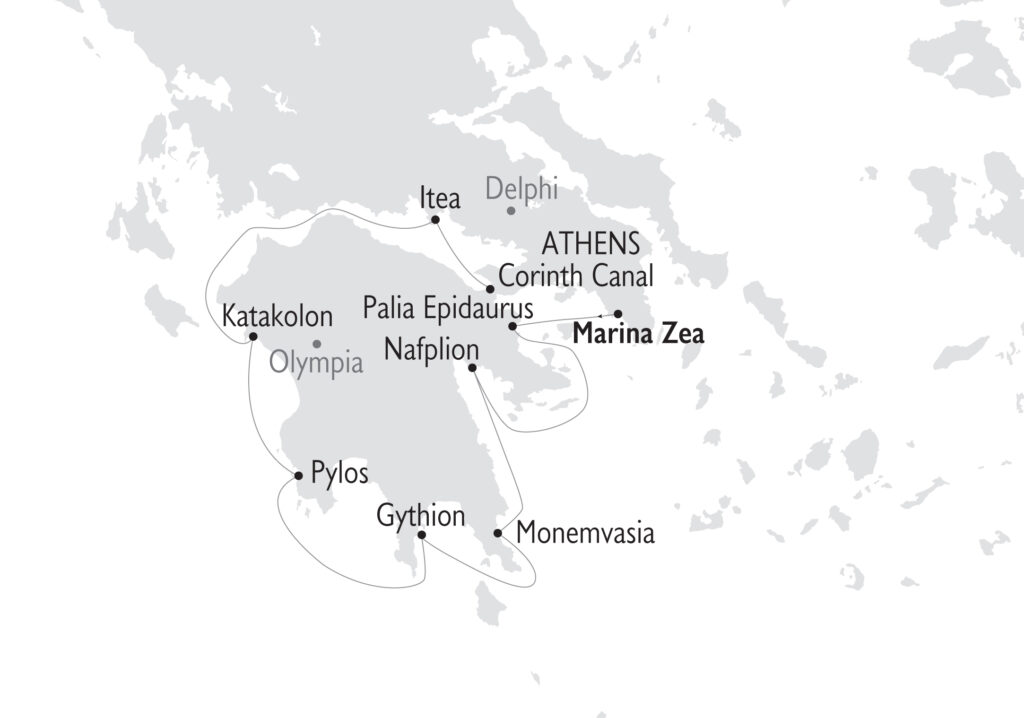
 Marina Zeas in Athens for welcome drinks and dinner whilst we set sail for Palia Epidaurus.
Marina Zeas in Athens for welcome drinks and dinner whilst we set sail for Palia Epidaurus.

The theatre at Epidaurus is one of the best-preserved sites in ancient Greece – the acoustics are amazing and, in its pomp, it seated 14,000. Happily, it’s in use again today. Afternoon sail to Nafplion.

Nafplion for Mycenae. Old Nafplion is worth a looksee, but the highlight is without doubt Mycenae – everything that’s great about the ‘Golden Age’. Listen carefully, such great historic tales.

Today starts at Gythion, an ancient Spartan Naval Base. Today’s optional excursion is to the Mani Peninsula and the Dirou Caves, and a stunning pre-historic landscape explored by boat.

Treasured by Greeks as the site of the liberating sea battle of Navarino, Pylos is a lovely little seaside resort. Hear about the history in the Place of Nestor on a hilltop overlooking the bay.

The famous sites just keep on coming – from Katakolon we drive to see the original Olympic Games running track and the Museum of the History of the Olympics. It’s mesmerising.

Our last legendary site is Delphi, home of the famous Oracle and one of the most revered sites of Antiquity. Later we cruise through the Corinth canal and have our farewell dinner.

Wake up in Athens then transfer to airport, or your Athens hotel if you’re taking one of our land excursions.
We have a range of optional shore excursions, accompanied by expert guides, to ensure you make the most of everything there is to see at all of your ports of call.

We leave our ship early in the morning to drive to Ancient Epidaurus, reputed to be the birthplace of Apollo’s son Asclepius. The Asclepieion at Epidaurus was the most celebrated healing center of the Classical world, the place where ill people from all across Greece went in the hope of being cured. Epidaurus is also famous for its awe-inspiring theater. Designed by Polykleitos the Younger in the 4th century B.C. the original 34 rows were extended in Roman times by another 21 rows. When full, the theatre seats up to 15,000 people and is still remarkable for its exceptional acoustics, which grant almost perfect perception of words spoken from the stage floor to all spectators, regardless of their seating. After completing our visit to all sites, and enjoying some time at leisure, we return to our vessel.
Info & Facilities
Duration approx. 3h
Transfer
Tour Guide
Entry fee
Price per person: 60€
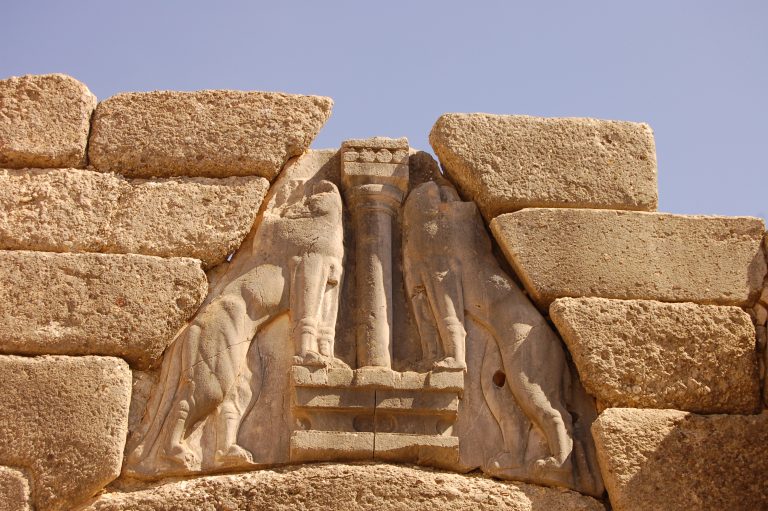
After a short drive through the colourful city of Nafplion and the beautiful fertile countryside of Argolis, we arrive
at Mycenae, a major centre of Greek Civilization. The importance of the city, which Homer calls “rich in gold”
begins in 1650 B.C and ceases around 1100 B.C with the fall of the civilization to which it gives name. The remains of this ancient glorious city, including the Cyclopean walls, the famous Lion’s Gate, the Palace – home to the Kingdom of mythical Agamemnon, the so-called Agamemnon Tomb and the museum are now a UNESCO World Heritage site,. Mycenae in legend was the royal seat of the ill-fated House of Atreus, and from Mycenae Agamemnon, “King of men”, went off as leader of the Achaean expedition to war against Troy. At the end of the tour we will have a short, guided walk in the historical centre of Nafplion, first Capital of modern Greece.
Info & Facilities
Duration approx. 3h
Transfer
Tour Guide
Entry fee
Price per person: 60€

Ancient Gythion was inhabited during prehistoric times and later used as a port by the Spartans who enlarged the
natural harbor and made it their naval base. Leaving Gythion we will cross the scenic Mani Peninsula, a desolate but beautiful region of underground lakes and rivers, windswept landscapes and towers at the tip of the Peloponnese. On arrival in Diros we visit the spectacular cave, which is one of the most important natural sites in Greece. The Paleolithic and Neolithic findings, many on display at the museum, show that the caves were one of the earliest inhabited places in Greece. The human skeletons are those of unburied dead, a fact which has led the Head of Antiquities to suggest that at the end of the Neolithic period, or at the beginning of the Bronze Age, a severe earthquake shook the area blocking the mouth of the cave, so that its inhabitants were walled up and died of starvation. The cave entrance remained sealed for about 4,500 years until rediscovered in the 1960s. The cave today is partially filled with water, so we board small fishing boats to explore the stalactites and stalagmites. After visiting the cave we drive to nearby Areopolis for a short stroll through the town.
Info & Facilities
Duration approx. 6h
Transfer
Tour Guide
Entry fee
Price per person: 70

Pylos town sits on the backside of stately Navarino Bay which has been the site of several famous naval battles. In Antiquity the Spartans and Athenians fought here during the Peloponnesian conflict. More recently, in 1827, a fleet of Venetians and other city states defeated an Ottoman fleet in one of the most important naval battles in history. This defeat eventually led to the independence of Greece, which occurred in 1829. After stopping to admire the wonderful scenery, we will continue along the Western Peloponnese coast, crossing the ravishing Messenian countryside between Methoni and Koroni.
We make a brief stop in Methoni, a charmingly picturesque little town where the imposing Medieval Castle is the central attraction. There is a graceful structure known as the Bourtzi (fortified islet) at the castle’s outermost point, which looks to be an architectural gem but has a dark history – the Ottomans built it as a place of imprisonment and execution. Even if you don’t know this history, the vibrations emitted from the solid stone are disturbing. Our next destination is Koroni, once a Venetian naval fortress, now a delightful town clustered on a hillside. Its narrow, cobbled streets and stairways lead up to the Venetian castle which protected the waterways. Visiting the old town and the Castle we can see well preserved architectural details such as iron balcony railings, arched windows and doors, forgotten mansions and some modest cottages offering unique views and garden scents. We also see the convent, Aghia Sophia Byzantine Chapel and a few cemeteries surrounded by beautiful wildflowers and perfect solitude. Later reflect on the sights as you take refreshment on the colorful waterfront and enjoy some free time before returning to our ship.
Info & Facilities
Duration approx. 4h
Transfer
Tour Guide
Entry fee
Price per person: 63€
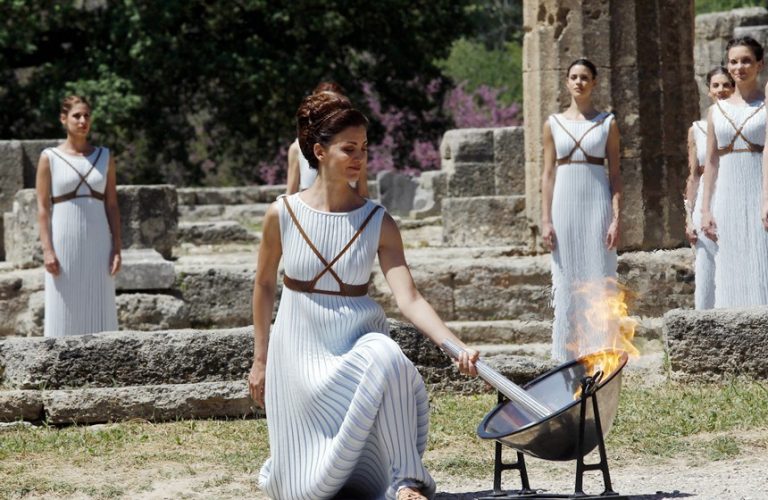
A full day excursion starting in Katakolon and ending in Patras, where we re-board the ship.
We disembark early in the port town of Katakolo and travel by bus to Olympia, one of the most famous and important sites in the ancient world. Olympia is revered as the birthplace of the Olympic Games. In the ancient Greek world, it was also the greatest Pan-Hellenic sanctuary for the worship of Zeus. Although the first recorded Olympics took place in 776 BCE, evidence indicates that some type of games or athletic contests were held as early as Mycenean times (11th-12th centuries BCE). Remarkably, from 776 on, the games were held uninterrupted for the next 1,000 years. From 1875 onward, excavation work spearheaded primarily by the German government revealed the fantastic treasures from antiquity that sit today in the marvelous archaeological museum. The most thrilling site at Olympia is the stadium, which looks much like it did more than 2,000 years ago. We also see the Temple of Hera, the magnificent Temple of Zeus, the Philippeion – a circular memorial of Ionic columns honoring the family of Alexander the Great, and the Leonidion which was the lodging place for the athletes who participated in the games. We later visit the Olympia Museum, one of the most beautiful museums in the world, filled with treasures unearthed from the mud that covered Olympia after a flood in about 400 AD. Among the many astonishing exhibits are the bronze helmet of Miltiades, worn by the Greek general at Marathon in his victory over the Persians in 490 BCE and the statuary from the east and west pediments of the temple of Zeus.
Following a traditional lunch in the town of Olympia, we’ll visit the museum of the History of the Olympic Games of Antiquity. Unlike the main archaeological museum, this building houses statuary and a host of artifacts specifically related to the ancient Olympic games. (The History Museum visit is optional provided it is open in the afternoon). After having time at leisure we travel overland to Patras on the north coast of the peninsula, where we will reembark ship and depart for Itea in the Gulf of Corinth.
Info & Facilities
Duration approx. 8h
Transfer
Lunch
Tour Guide
Entry fee
Price per person: 90€

Itea is commonly known as the gateway to Delphi, one of the most revered sites from the ancient world. Here, we disembark early in the morning and proceed to the famous ruins. Unlike other archaeological sites in Greece, Delphi is built on the side of a mountain. First time visitors are awed as much for the stunning natural beauty that surround the ruins as for the ancient buildings themselves. Behind the site, the bare limestone cliffs of the Phaidriades thrust several thousand feet up, towering over the archaeological site and museum, while to the south runs a deep and fertile river valley. The panoramic views from the road are truly inspiring. In its prime, Delphi was revered for its wealth and reputation, attributes which grew from the site’s location as hosting the most important oracle in the classical world. Indeed, because everything in Greece is connected to mythology, Delphi became the premier site for the worship of the god Apollo. The oracle had the ability to prophecy the future and give advice. Visitors from across the Greek world traveled here to consult with the oracle and responded by offering tribute to Apollo in the form of treasure. We will have a half day to explore the ruins complex and visit the adjoining museum. Some of the
highlights include the Sanctuary of Athena Pronaia, the Castalian Spring, the Gymnasium, the Temple of
Apollo, the Treasuries (built by various Greek city-states to commemorate victories), and the stadium.
Info & Facilities
Duration approx. 3.5h
Transfer
Tour Guide
Entry fee
Price per person: 62€
REMARKS:
Our tours are tailor-made to perfectly match each cruise itinerary and are exclusively run for guests in small groups. Our English-speaking guides are licenced local experts highly trained to the Variety concept. Please note that a minimum of 14 guests is required for the operation of each tour and/or the prices shown. Bookings take place after embarkation and during the second day of the cruise. The tours are subject to changes due to site restorations, weather, heavy traffic or other conditions. Should sites or museums be closed on our visiting days, alternative visits will be offered instead. The tours are quite active and require good physical condition. There is a dress code for Church or Monastery visits. Due to slippery sites we recommend comfortable shoes, sun tan lotion, a hat and water.







The 48 meter “Galileo” is a classic steel Motor Sailer, with spacious and well appointed interiors renovated in 2016. At the main deck, a lounge area with an American bar leads into a warm and elegant dining room finished with wood and leather.
Guests on the Galileo enjoy the most a shaded outdoor deck area with an outdoor bar and the ship’s sun deck. The M/S Galileo, built with the most stringent safety regulations, was launched in 1992 and rebuilt in 2007

Home at Sea
Comfort Zone
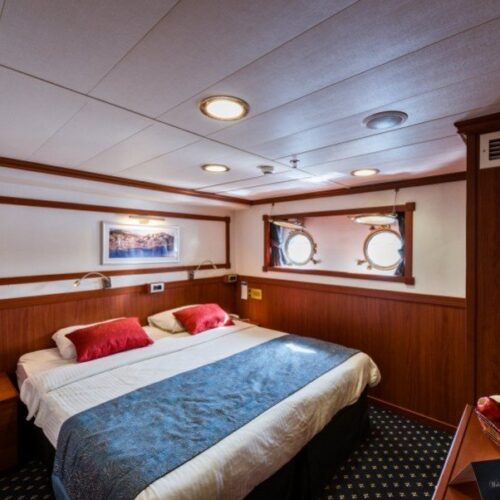
Lower Deck
1 Double or 2 Lower Beds

Lower Deck
Flexible Bedding Configuration
The Category B cabins are located on the Lower Deck and have portholes. The cabins are air-conditioned and fitted with flat-screen TV, mini fridge, central music, internal telephone, safe deposit boxes, hair dryer & en suite bathroom with shower.
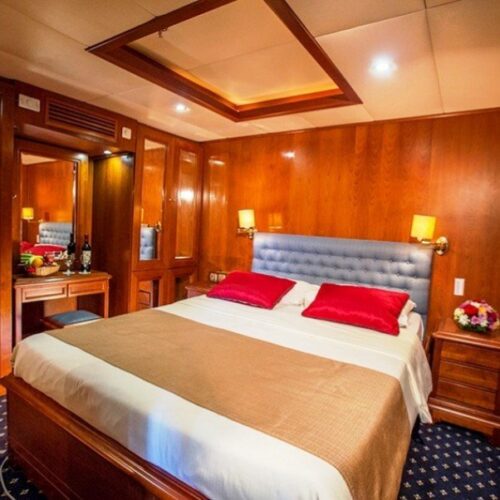
Upper Deck
1 Double or 2 Lower Beds
The Category A cabins are located on the Upper Deck and have large Portholes. The cabins are air-conditioned and fitted with flat-screen TV, mini fridge, central music, internal telephone, safe deposit boxes, hair dryer & en suite bathroom with shower.


The spacious sun deck is equipped with sun beds, deckchairs and shaded areas.

Guests on Galileo very much enjoy the shaded outdoor deck area with an outdoor bar where they can just relax enjoying the most breathtaking sea views.

The spacious Dining room is located at the Main Deck and accommodates all passengers in a single seating.





Ut enim ad minim veniam, quis nostrud exercitation ullamco laboris nisi ut aliquip ex ea commodo consequat. Duis aute irure dolor in reprehenderit in